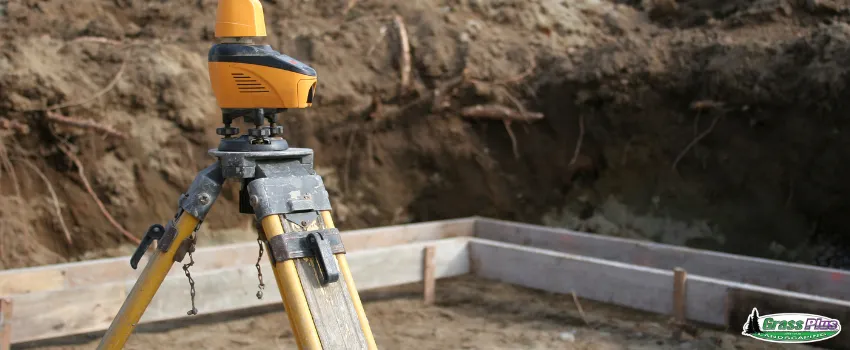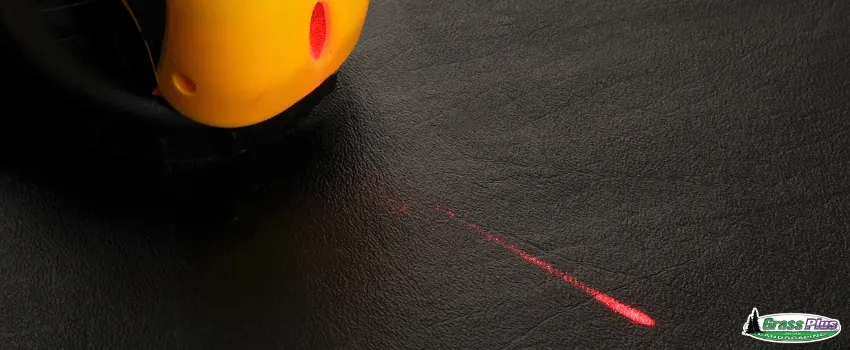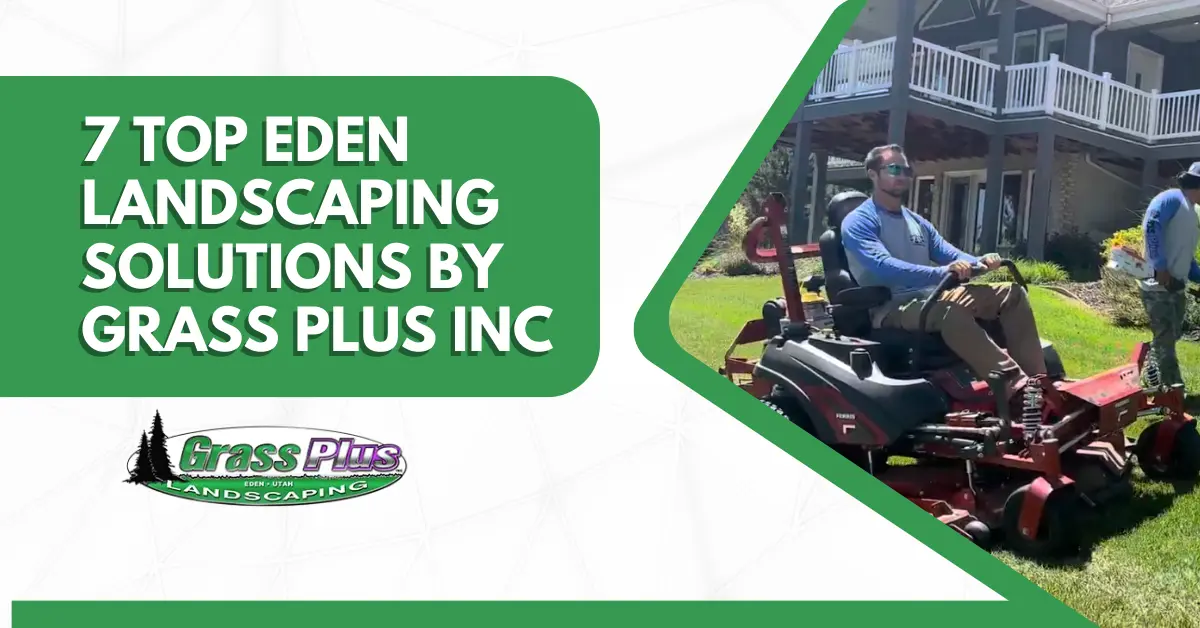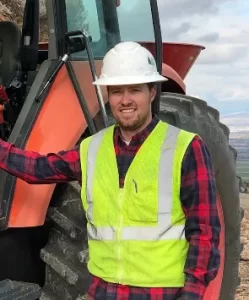The art of landscaping is all about transforming outdoor spaces into breathtaking and functional works of art. Be it a lush garden, a serene park, or an expertly designed commercial landscape, the goal is to create an environment that captivates and inspires.
However, achieving landscape perfection is no easy feat. It requires careful planning, precise execution, and an eye for detail. And speaking of precision, one technological marvel has been revolutionizing the way landscapes are designed and constructed: laser leveling.
In this blog, we’ll explore the world of laser leveling and analyze its significance in landscape design. So, if you’re ready to discover what is laser leveling and how this technology can take your outdoor spaces to the next level, read on below.
What is Laser Leveling?
Exactly what is laser leveling, and should you be using it for your landscape? As a homeowner, you might not be familiar with all of the tools and equipment that professionals use to finish your landscaping projects.
Laser leveling is a modern landscaping technique that uses advanced technology to ensure precise and accurate ground leveling. It involves the use of a specialized device called a landscape laser level or simply a laser level.
If you’re wondering what is laser leveling and how it works, it is a tool that emits a straight, horizontal beam of light. It serves as a reference line for establishing level ground. When used in landscape design, laser leveling tools enable designers to determine the high and low points of the terrain, allowing for accurate grading and slope creation.
Laser leveling tools can be operated manually or electronically. Manual laser levels require a person to move the device to different locations to establish the desired grade. On the other hand, electronic laser levels, often mounted on a tripod, can automatically adjust the beam’s height, making the process more efficient and precise.
The Role of Laser Leveling in Overcoming Landscape Design Challenges
Landscape design is a creative endeavor, but it has its fair share of challenges. Let’s quickly look at some common hurdles designers face and how laser leveling can help them overcome them.
1. Limited Space and Tricky Topography
Designing in a confined space or dealing with challenging topography can feel like trying to solve a complex puzzle. This is where laser leveling shines by enabling designers to make the most of every inch of the landscape.
The precise measurements and elevation control offered by laser levels empower designers to create customized solutions that fit like a glove, whether it’s a small urban courtyard or a site with steep slopes. Laser leveling is like having a master key that can unlock the full potential of any landscape, no matter how challenging it may be.
2. Complex Drainage Requirements
Effective drainage is the unsung hero of a healthy landscape, but tackling complex drainage requirements can be a headache. Laser leveling comes to the rescue by providing the necessary accuracy for efficient water flow.
With this technology, designers can establish precise gradients and channel water with confidence, ensuring it goes precisely where it’s supposed to go. Laser leveling tools help landscapers navigate the landscape, avoiding any potential waterlogged disasters along the way.
3. Integration of Hardscape and Softscape Elements
Seamlessly integrating hardscape and softscape elements is the holy grail of landscape design. It’s all about striking the right balance, but getting it wrong can be a costly mistake. This is where laser leveling works its magic by providing a visual reference for designers.
The precise benchmarks set by a landscape laser level act as guiding beacons, helping designers make informed decisions when blending the concrete and the green. Laser leveling tools are like expert eyes that ensure every hardscape element is ideally in harmony with its natural surroundings.
How to Use a Laser Level for Landscape Design
Using a laser level for landscape design involves the following steps:
1. Choose the Right Laser Level for the Job
There are different types of laser levels available on the market, each designed for specific applications. When selecting a landscape laser level, consider the required range, accuracy, and the level of control you need.
2. Set up the Laser Level
Proper setup is crucial to ensure accurate results. If you’re using a tripod-mounted landscape laser level, find a stable location in the area where you want to start the leveling process. Set up the tripod securely and at the desired height, making sure it remains level.
3. Establish a Benchmark
A benchmark is a reference point from which all other elevations in the landscape will be measured. To establish a benchmark, choose a fixed spot in the area, such as a stake or a permanent structure, and mark it as the starting point.
4. Determine the Desired Grade
The grade refers to the slope or inclination of the land’s surface. It plays a vital role in directing water flow and preventing drainage issues. Determine the desired grade for your landscape, considering factors such as the intended use of the area and local drainage requirements.
5. Perform a Survey
Using the landscape laser level, perform a survey of the existing terrain. Move the laser level to different locations, ensuring it remains stable and level each time. As you survey the area, the laser level will create a reference line, indicating the current elevation.
6. Adjust the Grade
Based on the desired grade, make the necessary adjustments to the landscape, such as filling or cutting soil. During this process, constantly refer to the laser level’s reference line to ensure accurate and consistent leveling.
7. Check the Level Throughout the Process
Regularly check the level of the ground during the grading process. This can be done by taking measurements at various points using a measuring tool, such as a tape measure, and comparing them to the benchmark. Making these checks will help you identify any deviations and make the required adjustments promptly.
8. Complete the Leveling Process
Once the desired grade has been achieved, complete the leveling process by ensuring the adjusted areas are properly compacted. This will help prevent future settling and maintain the integrity of the landscape design.
Benefits of Laser Leveling in Landscaping
Using laser leveling in landscaping offers the following benefits:
1. Saves Time and Effort
Laser leveling significantly reduces the time and effort required for traditional surveying and manual leveling. The use of laser levels streamlines the process, allowing designers and contractors to work more efficiently.
2. Provides Precise Measurements
Laser levels provide highly accurate measurements, minimizing the risk of errors and the need for rework. This precision ensures that the intended design and grade are achieved, resulting in a well-executed landscape.
3. Enables the Creation of Complex Designs
With its ability to measure and establish level ground across the entire landscape, laser leveling enables the creation of more complex designs. It facilitates the implementation of features such as multi-tiered patios, retaining walls, and intricate drainage systems.
4. Reduces the Risk of Drainage Issues
Proper grading is essential in preventing water accumulation and potential drainage problems. Laser leveling helps ensure accurate and consistent grading, reducing the risk of costly issues like water damage and flooding.
5. Enhances Safety
Uneven terrain can pose safety hazards for both property owners and visitors. Laser leveling helps eliminate these risks by creating level surfaces, promoting safe movement throughout the landscape.
The Bottomline
Laser leveling is a game-changer in the world of landscape design. Its precision, time efficiency, and versatility make it a valuable tool for creating stunning outdoor spaces. Whether planning a garden, a sports field, or a terrace, consider incorporating laser leveling into your project for optimized results.
However, before taking the plunge, carefully assess the complexity of your project, budget, and the expertise of the service provider. Considering these factors, you can make an informed decision and pave the way for a successful landscaping endeavor.
Transform Your Landscape With Grass Plus Inc.’s Landscaping Services
Revolutionize your landscape projects with Grass Plus Inc.’s professional services, which include laser leveling in Utah. Harness the precision of laser leveling tools to sculpt your outdoor spaces to perfection. Uncover the artistry of landscape laser level techniques and elevate your surroundings to new heights.







